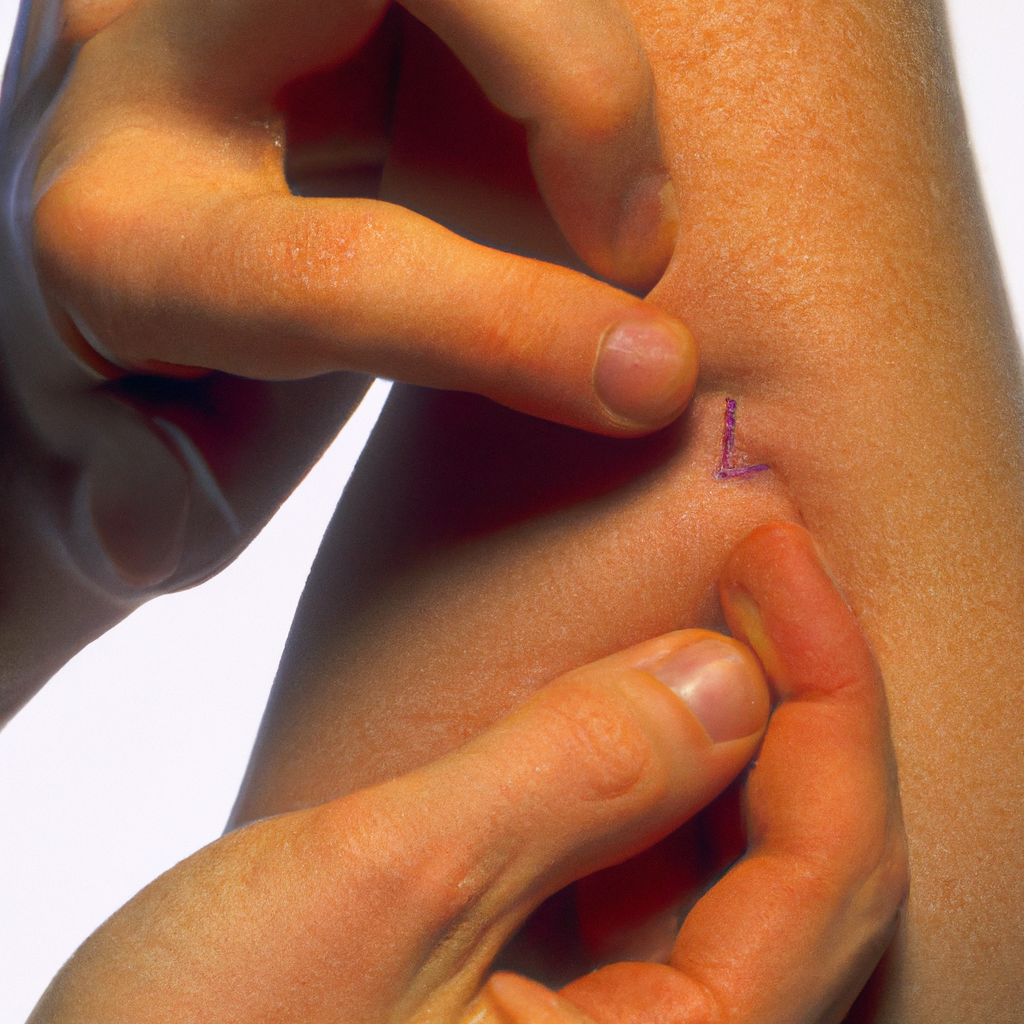What are the Steps in Live Skin Testing?
When it comes to beauty and skin care products, the safety and quality of those products matters a great deal. That is why most premium cosmetology companies take great care to ensure that all ingredients, including fragrances, in their products are safe for use- even for sensitive skin. To ensure that ingredients are safe, skin irritation testing is necessary. Live skin testing is conducted to check whether a cosmetic product is free from allergens and irritants, which could cause a reaction or an allergic reaction on the skin.
The leading Swiss cosmetics companies such as Babor, Valmont, La Prairie, and Luzern are no exception. All these companies undergo an extensive skin irritation testing process before releasing their products. This article takes a closer look at what live skin irritation testing is and how it works in the production of luxury cosmetics and skincare products.
What is Live Skin Testing?
Live skin testing, also referred to as skin sensitization tests, evaluates how a product may influence an individual’s skin when applied. Live skin irritation testing is considered to be the preventive and authoritative way of determining the safety and efficacy of cosmetics products and ingredients associated with the production of luxury cosmetics products.
Live skin testing procedure generally consists of the following steps:
1. Selection and Pre-Testing of the Ingredients
Before any luxury cosmetics product reaches the market, its individual ingredients, fragrances, and preservatives all undergo a pre-testing procedure to determine their potential allergenic properties. For this test, animal studies, in vitro skin cultures, and optimization studies are often used. The results from these tests help the cosmetics companies to select the best possible ingredients that are the safest and highest quality.
2. Patch Testing
Once the ingredients of the cosmetic products have been selected, they are then subjected to a patch test to evaluate their irritant and allergenic potential. This test requires the subject to place small patches containing test ingredients on their skin. The patches are left on the skin for 2-3 days and then removed to inspect if there is any irritation that has occurred.
3. Intradermal Testing
The intradermal test is done by injecting a small amount of the test material into the skin to determine any potential allergenicity that might be present. This test is typically conducted on those who have shown severe allergies in a skin patch test.
4. Skin and Eye Irritation Testing
The skin irritation test is conducted to determine any irritation that can occur on the skin after the product is used. For this test, a small quantity of the product is applied to the skin and then observed for any signs of irritation or allergic reaction.
The eye irritation test is also performed which involves applying a small amount of the test material under the eye. After a certain period, the eyes are then observed for signs of irritation such as redness, swelling, and tearing.
What Are the Benefits of Live Skin Testing?
Live skin irritation testing is beneficial to the development of products that are safe and suitable for sensitive skin types. It ensures that only the finest ingredients are being used which helps to reduce the risk of skin reactions or allergies that may be caused by certain ingredients. Additionally,cosmetology companies are now able to create new products with fewer restrictions and a greater variety of ingredients suitable for all skin types.
Frequently Asked Questions
Q. What is the Purpose of a Skin Irritation Test?
The purpose of a skin irritation test is to make sure that the ingredients used in a product are free from any allergens or irritants that could cause a reaction or an allergic reaction on the skin.
Q. What are the Types of Skin Irritation Tests?
The types of skin irritation tests include the patch test, the intradermal test, and the skin and eye irritation tests.
Q. How Long Does Skin Irritation Testing Take?
Skin irritation testing can take up to several days depending on the type of test and the ingredients that are being tested. Generally, patch tests and intradermal tests both take around 3 days while skin and eye irritation tests may take longer.
Q. What Happens During a Skin Irritation Test?
During a skin irritation test, the product or its individual ingredients are applied to the skin and then observed for any signs of irritation or allergic reaction. Depending on the type of test, that can mean small patches of the test material are placed on the skin or a small amount of the test material is injected into the skin.
Benefits of Live Skin Testing for Cosmetics and Skincare Products
Live skin testing plays a vital role in ensuring the safety and efficacy of cosmetics and skincare products, especially for individuals with sensitive skin. By subjecting these products to rigorous testing, luxury cosmetics companies like Babor, Valmont, La Prairie, and Luzern can guarantee that their offerings are free from allergens and irritants that may cause adverse reactions. Here are some key benefits of live skin testing:
1. Enhanced Safety: Live skin testing helps identify potential allergens and irritants present in cosmetic ingredients. By conducting thorough tests, companies can eliminate or minimize the use of harmful substances, ensuring that their products are safe for consumers, even those with sensitive skin.
2. Customized Formulations: Through live skin testing, cosmetology companies can determine which ingredients are well-tolerated by the skin. This knowledge allows them to develop customized formulations suited for different skin types, ensuring optimal performance and minimal risk of adverse reactions.
3. Reduced Allergic Reactions: By meticulously testing the ingredients used in their products, luxury cosmetics companies can significantly reduce the occurrence of allergic reactions. This is particularly important for individuals who may be prone to allergies or have a history of sensitivities.
4. High-Quality Standards: Skin irritation testing is an integral part of maintaining high-quality standards in the cosmetic industry. By adhering to strict testing protocols, companies can ensure that their products meet the highest standards of safety and efficacy.
5. Increased Consumer Confidence: Consumers are becoming more discerning when it comes to the products they use on their skin. By conducting live skin testing and highlighting the safety measures taken, cosmetics companies can instill confidence in their target audience, fostering trust and brand loyalty.
To achieve accurate and reliable results, luxury cosmetics companies follow a series of steps during the live skin testing process:
Steps in Live Skin Testing for Cosmetics
1. Selection and Pre-Testing of Ingredients
Before a luxury cosmetics product is released, each individual ingredient undergoes thorough pre-testing. This involves utilizing animal studies, in vitro skin cultures, and optimization studies to evaluate potential allergenic properties. The results obtained from these tests guide companies in selecting the safest and highest quality ingredients for their products.
2. Patch Testing
After selecting the ingredients, patch testing is performed to assess their irritant and allergenic potential. During this test, small patches containing the test ingredients are applied to the skin and left in place for 2-3 days. After removal, the patches are inspected for any signs of irritation.
3. Intradermal Testing
Intradermal testing is conducted by injecting a small amount of the test material into the skin. This test is primarily carried out on individuals who have previously exhibited severe allergies during patch testing. It helps determine any potential allergenicity that may not have been detected through other tests.
4. Skin and Eye Irritation Testing
Skin and eye irritation testing assesses the potential for irritation or allergic reactions caused by the cosmetic product. A small quantity of the product is applied to the skin, and any signs of irritation or allergic reaction are observed. Similarly, the test material is applied beneath the eye to evaluate eye irritation symptoms such as redness, swelling, and tearing.
By following these comprehensive testing procedures, luxury cosmetics companies can ensure that their products meet stringent safety standards and provide consumers with effective and trustworthy skincare solutions.
Conclusion
Live skin testing is a critical process for luxury cosmetics companies, enabling them to deliver safe and high-quality products to consumers.
By implementing rigorous testing protocols, such as patch testing, intradermal testing, and skin and eye irritation testing, these companies can minimize the risk of adverse reactions and ensure the suitability of their products for all skin types. Through live skin testing, the cosmetics industry continues to prioritize consumer safety and foster confidence in their offerings.






